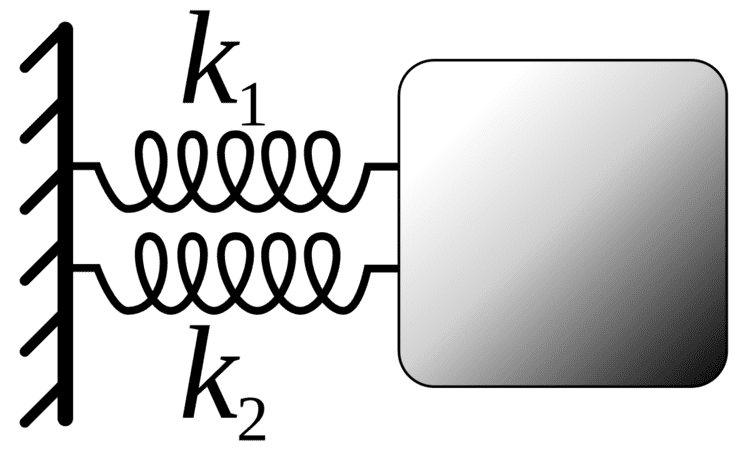 | ||
In mechanics, two or more springs are said to be in series when they are connected end-to-end, and in parallel when they are connected side-by-side; in both cases, so as to act as a single spring.
More generally, two or more springs are in series when any external stress applied to the ensemble gets applied to each spring without change of magnitude, and the amount strain (deformation) of the ensemble is the sum of the strains of the individual springs. Conversely, they are said to be in parallel if the strain of the ensemble is their common strain, and the stress of the ensemble is the sum of their stresses.
Any combination of Hookean (linear-response) springs in series or parallel behaves like a single Hookean spring. The formulas for combining their physical attributes are analogous to those that apply to capacitors connected in series or parallel in an electrical circuit.
Equivalent spring
The following table gives formulas for the spring that is equivalent to a system of two springs, in series or in parallel, whose spring constants are
